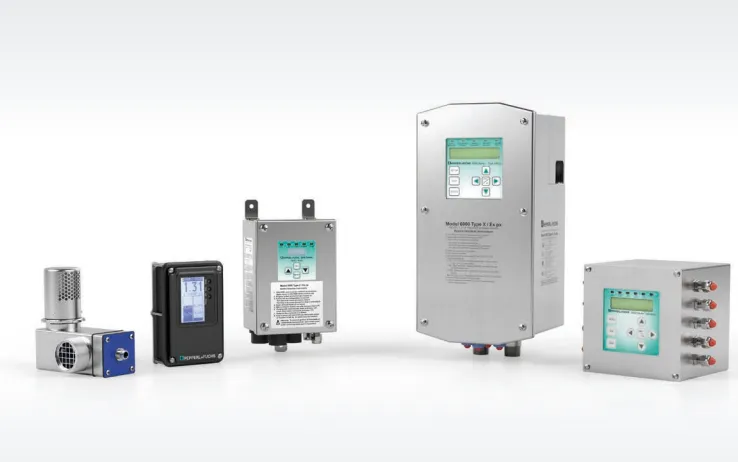How to Power Equipment in Hazardous Locations
A Smarter and Safer Way to Power Equipment in Hazardous Locations
When you’re trying to control equipment in Class I or II Div 2 environments, or Zone 2/22, you’re often stuck between two bad options: pay big for explosion-proof gear, or take your chances with noncompliance.
Pepperl Fuchs’ 2025 Multi-Enclosure Purge and Pressurization System offers a smarter third option: transform your hazardous-area enclosure into a safe space for standard industrial equipment
What Does This System Actually Do?
At a high level, this purge system pushes clean air (or an inert gas) into your enclosure to prevent flammable gases or dust from entering. That pressurized environment brings the interior down to a “general-purpose” classification, so you can install your regular industrial equipment without worrying about spark risks or fire hazards.
In other words, you're taking a hazardous environment and making it safe enough to use standard gear. No bulky explosion-proof panels. No major cost creep.
Built for Flexibility and Scale
One of the standout features of the 2025 system is that it’s designed to handle multiple enclosures from a single control unit. If you have a skid with several panels, this is a significant win. Instead of buying and managing a separate purge system for each box, you can streamline the process with a single controller and multiple vents.
It’s also surprisingly compact. The control unit is mounted externally or on the panel and is housed in a rugged, marine-grade aluminum body. It’s built for the real world, not a lab.
Touchscreen Simplicity
Gone are the days of configuring purge systems through cryptic dip switches. This one comes with a touchscreen interface, pre-programmed purge cycles, and simple LED indicators. You can see pressure status, alarms, purge timing, it’s all right there.
It supports both 24V DC and 120V AC, so you’re covered no matter how your plant is wired.
Where It Fits Best
This system isn’t overkill, it’s just enough. Ideal applications include:
- Oil & Gas: PLCs, drives, and control systems near compressors or tanks
- Water/Wastewater: Panels exposed to off-gassing or near chemical feeds
- Manufacturing: Paint booths, battery lines, or anywhere flammable dust may settle
- Process Skids: Modular automation setups with multiple enclosures
If you’ve got a dusty, gassy, or spark-sensitive space where you want to use every day electrical gear, this system is worth a look.
Why It’s Better Than Explosion-Proof
Explosion-proof gear has its place, but it’s not always the right call. It's heavier, more expensive, and harder to work on.
With a purge system, you’re using standard enclosures (like a NEMA 4/12 box) and avoiding the high upfront and long-term costs of explosion-rated components.
You’ll still need to design your system correctly, vent placement matters, and you’ll need a source of clean compressed air, but once you’re set up, the payoff is big.
Things to Consider Before You Spec It
1. Air Supply: Do you have a reliable source of clean, dry compressed air or inert gas (5–120 PSI)?
2. Enclosure Volume: This system is rated up to 450 cubic feet. Got a bigger setup? Ask about scaling.
3. Maintenance Plan: Someone needs to check venting, monitor pressure, and respond to any alarms.
Want to dive deeper?
For additional technical specifications, like how to size your supply lines, manage pressure across multiple enclosures, and how to avoid common install pitfalls, check out this technical white paper from Pepperl+Fuchs. It's a guide written by their product development lead, Chris Romano, for purge systems with clear visuals and best practices.
At Centro, we help you sort through the noise and pick the right solution, not the most expensive one.
Want to know if this system fits your application? Contact our Branch & Value Add Manager at [email protected].

